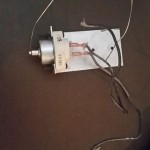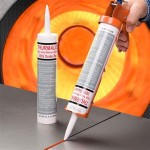Vermont Castings Gas Fireplace Remote Control: A Comprehensive Guide
Vermont Castings gas fireplaces are renowned for their efficiency, aesthetic appeal, and ease of use. A significant component contributing to this convenience is the remote control system. This article provides a detailed overview of the Vermont Castings gas fireplace remote control, covering its functionalities, operation, troubleshooting, and essential safety precautions. Understanding the remote control and its features is crucial for maximizing the benefits and ensuring the safe operation of your fireplace.
The remote control provided with a Vermont Castings gas fireplace is a sophisticated device that allows users to manage various aspects of the fireplace operation from a distance. This includes turning the fireplace on and off, adjusting the flame height, controlling the blower (if applicable), and setting timers or thermostats for automated operation. The specific features and capabilities of the remote control may vary slightly depending on the fireplace model and the remote control version.
Before operating the fireplace using the remote control, it is essential to familiarize oneself with the owner's manual provided by Vermont Castings. This manual contains specific instructions and safety guidelines relevant to the particular fireplace model. Ignoring these instructions can lead to improper operation, damage to the unit, or potential safety hazards.
Understanding the Basic Remote Control Functions
Most Vermont Castings gas fireplace remote controls feature a set of standard functions. These commonly include an "On/Off" button, flame height adjustment controls, and a mode selection button. The “On/Off’ button is the primary control for initiating or terminating the fireplace operation. Pressing this button typically sends a signal to the fireplace receiver unit, which then activates or deactivates the gas supply. It is crucial to note that some models require holding the "On/Off" button for a short duration to prevent accidental activation or deactivation.
Flame height adjustment controls allow the user to modify the intensity of the flames. These controls usually consist of "Up" and "Down" buttons, increasing or decreasing the flame height, respectively. By adjusting the flame height, the user can control the heat output of the fireplace and create the desired ambiance. Some remotes provide a range of flame height settings, while others offer a more limited selection. Incremental adjustments should be made, observing the changes in the flame to avoid setting the flame too high or too low.
The mode selection button typically allows the user to switch between different operating modes, such as manual mode, thermostat mode, and timer mode. Manual mode provides direct control over the fireplace, allowing the user to adjust the flame height and turn the fireplace on or off as needed. Thermostat mode allows the user to set a desired room temperature, and the fireplace will automatically turn on or off to maintain that temperature. Timer mode allows the user to set a specific duration for the fireplace to operate, after which it will automatically turn off.
Beyond these basic functions, some remote controls may also include advanced features such as blower control, accent lighting control, and child safety lockout. Blower control allows the user to adjust the speed of the blower fan, which helps circulate heat throughout the room. Accent lighting control allows the user to adjust the intensity or color of the accent lighting within the fireplace. Child safety lockout prevents unauthorized operation of the fireplace by disabling the remote control functions.
The remote control communicates with the fireplace receiver unit, which is typically located near the fireplace. The receiver unit receives signals from the remote control and translates them into actions, such as turning the gas supply on or off, adjusting the flame height, or activating the blower. The communication between the remote control and the receiver unit is usually via radio frequency (RF) signals. This allows the remote control to operate from a distance and without a direct line of sight to the receiver unit.
Operating the Remote Control Safely and Effectively
Operating the remote control safely and effectively requires careful attention to several important principles. First and foremost, it is crucial to read and understand the owner's manual for the specific fireplace model. The owner's manual provides detailed instructions on the proper operation of the remote control, as well as important safety precautions. Following these instructions will help prevent accidents and ensure the longevity of the fireplace.
It is essential to ensure that the remote control is properly paired with the fireplace receiver unit. Pairing is the process of establishing a communication link between the remote control and the receiver unit. The pairing procedure usually involves pressing a specific button on the receiver unit and then pressing a button on the remote control. The owner's manual provides specific instructions on how to pair the remote control with the receiver unit. If the remote control is not properly paired, it will not be able to control the fireplace.
The remote control requires batteries to operate. It is important to use the correct type and size of batteries, as specified in the owner's manual. Replacing the batteries regularly will ensure that the remote control is always ready for use. Low batteries can cause the remote control to malfunction or to send weak signals to the receiver unit. When replacing the batteries, it is essential to observe the correct polarity, ensuring that the positive and negative terminals of the batteries are aligned correctly.
When not in use, the remote control should be stored in a safe place, away from direct sunlight, extreme temperatures, and moisture. This will help protect the remote control from damage and prolong its lifespan. It is also a good idea to remove the batteries from the remote control if it is not going to be used for an extended period of time. This will prevent battery leakage, which can damage the remote control.
Avoid exposing the remote control to excessive heat, impact, or moisture. These conditions can damage the remote control and render it inoperable. If the remote control is accidentally dropped or exposed to moisture, it should be inspected carefully for any signs of damage before being used again.
Troubleshooting Common Remote Control Issues
Despite their reliability, remote controls can sometimes encounter problems. Knowing how to troubleshoot common issues can save time and frustration. One of the most common issues is a non-responsive remote control. If the remote control is not working, the first step is to check the batteries. Ensure that the batteries are fresh and properly installed. If the batteries are low, replace them with new ones of the correct type.
If replacing the batteries does not resolve the issue, the next step is to check the pairing between the remote control and the receiver unit. It is possible that the remote control has become unpaired from the receiver unit. Refer to the owner's manual for instructions on how to re-pair the remote control and the receiver unit. Follow the instructions carefully, ensuring that all steps are completed correctly.
Another potential issue is interference from other electronic devices. Radio frequency signals can be disrupted by other devices that emit similar signals, such as cordless phones, wireless routers, and microwave ovens. Try moving the remote control closer to the fireplace or turning off any nearby electronic devices that may be causing interference. If the interference is persistent, consider relocating the fireplace or the interfering devices.
If the remote control is still not working after trying these troubleshooting steps, there may be a problem with the remote control itself or with the fireplace receiver unit. In this case, it is best to contact a qualified technician or the Vermont Castings customer service department for assistance. Do not attempt to repair the remote control or the receiver unit yourself, as this could void the warranty or create a safety hazard.
It is important to note that some remote controls have a limited range. If the remote control is being used from too far away, it may not be able to communicate effectively with the receiver unit. Try moving closer to the fireplace and testing the remote control again. If the remote control works when it is closer to the fireplace, but not from a distance, the range may be limited.
Regularly cleaning the remote control can also help prevent problems. Dust and dirt can accumulate on the remote control buttons and prevent them from functioning properly. Use a soft, dry cloth to clean the remote control regularly. Avoid using harsh chemicals or abrasive cleaners, as these can damage the remote control.
Understanding the functions, operation, and troubleshooting of the Vermont Castings gas fireplace remote control is essential for safe and effective use of the fireplace. By following the instructions in the owner's manual and taking the necessary precautions, users can enjoy the convenience and comfort of their gas fireplace for many years to come.
A Solution For Those Impossible To Get Vermont Castings Remote Controls Hearth Com Forums Home

Vermont Castings Intrepid Direct Vent Gas Stove User Manual 3 90 30007 Tagged Remote Controls Fire Parts Com

Amazing Deals And Donations Gas Fireplace Remote Control For Millivolt Valve New

Sky Tech Thermostatic Remote Control For Gas Stoves Fireplaces Mazzeo S

Vermont Castings Radiance

Vermont Castings Intrepid Direct Vent Gas Stove With Intellifire Touch Royal Fire Pits

Radiance Direct Vent Gas Stove By Vermont Castings Ottawa On

Vermont Castings Majestic Hand Held Remote Tsfsc Friendly Fires

Intrepid Direct Vent Gas Stove Dreifuss Fireplaces

Ambient Rcb On Off Fireplace Remote Control Manual Reviews
Related Posts








